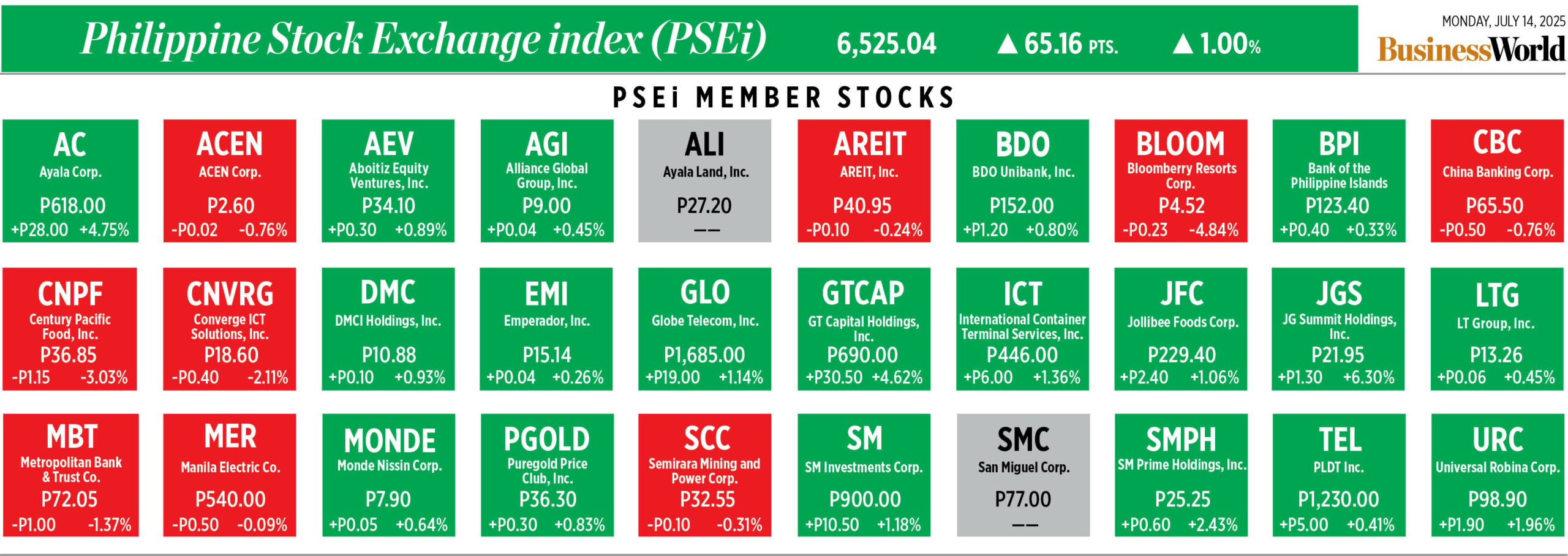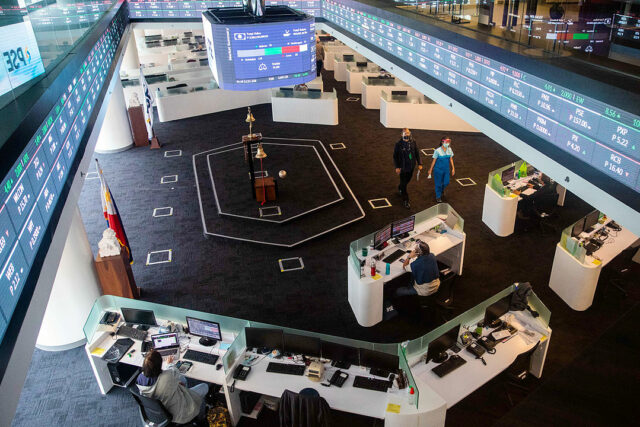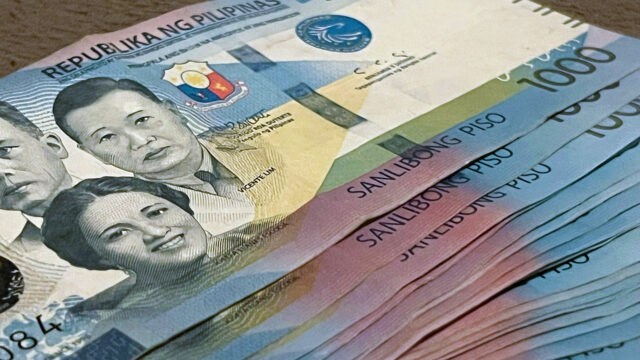Peso falls on tariff news
THE PESO dropped against the dollar on Monday after US President Donald J. Trump threatened to impose higher import tariffs on additional countries and goods over the weekend.
The local unit closed at P56.63 per dollar, sinking by 16 centavos from its P56.47 finish on Friday, Bankers Association of the Philippines data showed.
The peso opened Monday’s session weaker at P56.60 against the dollar. Its worst showing was at P56.725, while its intraday best was at P56.56 versus the greenback.
Dollars exchanged went down to $1.16 billion on Monday from $1.22 billion on Friday.
“The dollar-peso closed higher on safe-haven demand toward the dollar following fresh tariff threats from the US president,” a trader said in a phone interview.
The greenback was also supported by higher global crude oil prices due to renewed geopolitical concerns, Rizal Commercial Banking Corp. Chief Economist Michael L. Ricafort said in a Viber message.
For Tuesday, the trader expects the peso to move between P56.40 and P56.80 per dollar, while Mr. Ricafort sees it ranging from P56.55 to P56.75.
The euro fell to a three-week low early on Monday while the dollar made slight gains after Mr. Trump threatened to impose a 30% tariff on imports from two of the largest US trading partners beginning Aug. 1, Reuters reported.
Mr. Trump on Saturday announced the latest tariffs in separate letters to European Commission President Ursula von der Leyen and Mexican President Claudia Sheinbaum that were posted on his Truth Social media site.
Both the European Union and Mexico described the tariffs as unfair and disruptive, while the EU said it would extend its suspension of countermeasures to US tariffs until early August and continue to press for a negotiated settlement.
Reaction in the currency market to Mr. Trump’s latest tariff threats was largely muted in Asian trade, though the euro did slip to a roughly three-week low early in the session.
The single currency later regained some ground and last traded 0.13% lower at $1.1676.
Elsewhere, sterling was down 0.15% to $1.3470, while the Japanese yen rose marginally to 147.31 per dollar.
The dollar was barely moved on its currency index at 97.882.
Oil prices rose on Monday and reached their highest level in three weeks, as investors eyed further US sanctions on Russia that may affect global supplies, while higher oil imports by China also offered support.
Brent crude futures rose 58 cents or 0.8% to $70.94 a barrel by 0900 GMT, while US West Texas Intermediate crude futures climbed 59 cents or 0.9% to $69.04.
Mr. Trump said on Sunday that he will send Patriot air defense missiles to Ukraine. He was due to make a “major statement” on Russia on Monday, having expressed his frustration with Russian President Vladimir Putin due to the lack of progress in ending the war in Ukraine. — Aaron Michael C. Sy with Reuters















